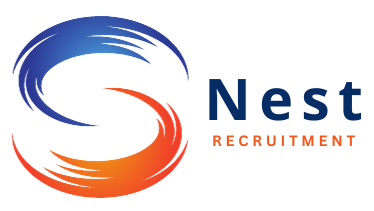Building Trust Through Open Communication: The Key to Resident Satisfaction
Building Trust Through Open Communication: The Key to Resident Satisfaction
In the realm of aged care, the cornerstone of resident satisfaction lies not just in the quality of care provided but also in the strength of the relationships fostered between residents and nursing professionals. It's here that the pivotal role of open communication emerges as a harbinger of trust, setting the foundation for a thriving environment where personalised care for residents flourishes. As trustworthy nursing professionals, we understand that our commitment extends beyond mere nursing services for aged care; it's about building connections that honour the dignity and autonomy of those we serve.
In the following sections, we delve into why open communication is instrumental in building trust with our residents, highlighting strategies that foster this transparency. We'll also tackle the challenges that can arise in maintaining open lines of dialogue and offer solutions to overcome these barriers. Through real-life examples, we aim to illuminate the paths we've taken to ensure our communication strategies truly meet the needs of our residents, culminating in the peak of resident satisfaction. Our journey through these insights aims to reinforce the belief that at the heart of quality care lies the unshakeable trust built on the pillars of open communication.
The Importance of Open Communication in Building Trust
The Role of Open Communication in Resident Relationships
- Enhancing Team Collaboration: Open communication is crucial in healthcare settings, particularly in aged care, where team collaboration is essential. Effective communication ensures that critical information is accurately conveyed, fostering a safer environment for residents by reducing medical errors caused by miscommunication.
- Building Trust and Respect: Trust and respect are foundational elements of effective teams. Open communication promotes these qualities, making it easier for healthcare professionals to work towards common goals, enhancing the quality of care provided to residents.
- Empowering Residents: By maintaining clear communication, residents feel more valued and involved in their care decisions. This empowerment can lead to increased satisfaction and a sense of autonomy among residents.
Benefits of Open Communication for Resident Satisfaction
- Improved Information Flow and Safety: Clear communication leads to better information flow among staff, which can enhance intervention effectiveness and increase safety. It also boosts staff morale, contributing to a more positive work environment.
- Enhanced Family and Resident Engagement: Open communication with families helps them understand the care process and the resident's condition better, aligning expectations and reducing conflicts. This engagement is crucial for transitioning smoothly to palliative care when necessary.
- Feedback and Continuous Improvement: Regular feedback from residents and their families is vital for continuous improvement. Open lines of communication allow for real-time feedback, which can be immediately acted upon to enhance the resident's quality of life and satisfaction.
Strategies to Foster Open Communication
Creating a Non-Judgmental Environment
- Actively Listen Without Prejudice: We strive to listen genuinely to each other without forming judgments or planning responses. This approach fosters a safe space where everyone feels heard and respected.
- Use "I Feel" Statements: Communicating feelings rather than accusations helps in expressing ourselves without blaming others, which is crucial in maintaining a non-judgmental tone.
- Encourage Questions for Clarity: Asking questions to confirm understanding shows attentiveness and respect for the speaker's point of view, enhancing mutual understanding.
- Cultivate Compassion: Recognising that each of us is doing our best under our circumstances encourages a compassionate and supportive environment.
- Emphasise Team Unity: Reminding ourselves that we are all on the same team helps in focusing on common goals rather than personal differences.
Providing Information Transparently and Honestly
- Clear Communication Channels: We ensure that all communication channels are open and accessible, allowing for transparent and honest exchanges of information.
- Regular Updates and Feedback: Keeping everyone informed through regular updates and actively seeking feedback demonstrates our commitment to transparency.
- Handling Sensitive Information with Care: While being transparent, we also respect privacy and handle sensitive information with the discretion it deserves.
- Encourage Open Discussions: We promote an environment where everyone feels safe to discuss their thoughts openly, which builds trust and fosters a deeper understanding among team members.
- Adopt and Maintain Consistent Practices: Consistency in our communication practices reinforces reliability and trustworthiness, essential for a transparent relationship.
Challenges and Solutions in Maintaining Open Communication
Overcoming Language Barriers
- Recruitment of Multilingual Staff: Hiring caregivers who speak the same language as the residents can dramatically improve communication and comfort levels, fostering a more inclusive environment.
- Language Training for Staff: Providing basic language training to our staff ensures that they can communicate effectively with residents who speak different languages, enhancing understanding and care.
- Utilising Interpreter Services: When direct language alignment isn't possible, professional interpreters can be invaluable in ensuring clear communication, whether in-person or via digital platforms.
- Technology Aids: Leveraging apps and devices that offer real-time translation can bridge the communication gap, ensuring all parties are understood clearly and promptly.
- Educational Materials in Multiple Languages: Developing resources in various languages empowers residents by providing them with the necessary information to manage their health effectively.
Addressing Time Constraints and Personal Biases
- Scheduled Comprehensive Feedback: Allocating specific times for in-depth discussions helps in managing time efficiently while ensuring every voice is heard.
- Training on Unconscious Bias: Regular training sessions help staff recognise and address their biases, which can influence interactions and decision-making.
- Promoting Open Dialogue: Encouraging staff to express concerns and discuss potential biases openly can lead to more aware and adaptive communication strategies.
- Use of Clear, Inclusive Language: Avoiding jargon and ensuring that communication is straightforward and inclusive minimises misunderstandings and promotes clearer interactions.
- Feedback Mechanisms for Continuous Improvement: Implementing systems that allow for regular feedback on communication practices helps in identifying areas for improvement and ensuring that strategies remain effective and relevant.
Real-Life Examples of Successful Communication Strategies
Case Studies in Building Trust
- Demonstrating Credibility Through Success Stories: Showcasing case studies where clear communication has led to successful outcomes is crucial. For instance, understanding customer motivations and aligning our messages with their values has proven effective. This approach not only builds trust but also demonstrates our commitment to their needs.
- Social Proof as Trust Builder: Leveraging testimonials and reviews has significantly enhanced our credibility. Social proof, such as endorsements from respected industry figures, has helped us establish trust and reassure our clients of the reliability and effectiveness of our services.
Lessons Learned in Different Settings
- Adapting Communication to Audience Needs: Tailoring communication styles to fit different audiences has been instrumental. For example, interactions with the media require concise and focused messages, while communication with students may be more informal and engaging, addressing their specific interests and aspirations.
- Overcoming Barriers with Inclusive Practices: Addressing potential communication barriers, like language differences or cultural variances, has taught us the importance of inclusive communication practices. Providing translated materials and employing interpreters has ensured effective communication across diverse groups, fostering a more inclusive environment.
- Continuous Feedback for Improvement: Actively seeking feedback from both our team and our audience has been vital. This ongoing process helps us refine our strategies and better understand the impact of our communication, ensuring that our messages resonate well and create meaningful connections.
Conclusion
Through careful exploration, this article has emphasised the indelible link between open communication and trust within the aged care setting, underlining how such transparency not only enhances resident satisfaction but fundamentally shapes the quality of care. By implementing strategies that nurture open dialogue, address challenges head-on, and adapt based on real-life successes, we pave the way for a culture of trust and respect. These efforts, geared towards understanding and meeting resident needs while empowering them, highlight the profound impact of clear, compassionate communication on the overall wellbeing of those in our care.
The journey towards fostering an environment where open communication thrives demands continuous commitment and reflection. As we move forward, it becomes imperative to not only adopt the practices outlined but also engage in a cycle of feedback and improvement to refine and adjust our approaches. The significance of our findings reaches beyond the confines of aged care, serving as a critical reminder of the universal value of building trust through transparency. Encouraging further research and action, we underscore the enduring importance of open communication as the cornerstone of effective care and strong, respectful relationships.











